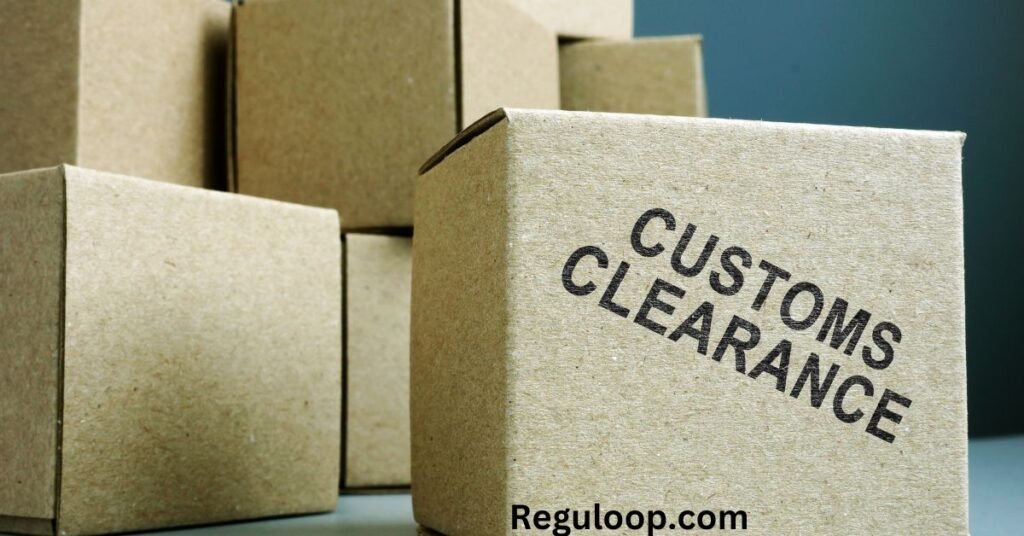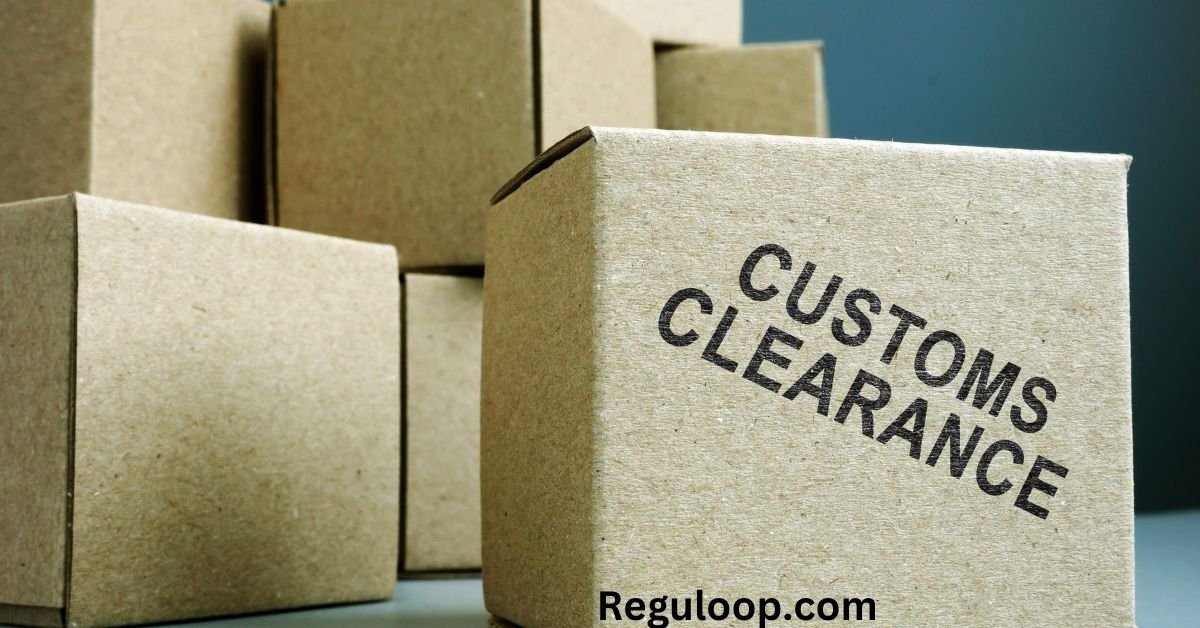When importing consumer goods into the United States, it’s essential to navigate the customs clearance process efficiently to avoid delays and ensure compliance with U.S. import regulations. Here’s a step-by-step breakdown of the customs clearance process:

1. Documentation Preparation for Customs Clearance Process:
- Importer Security Filing (ISF): Before your goods are loaded onto a vessel destined for the U.S., you are required to submit an Importer Security Filing (ISF) at least 24 hours before the goods are loaded onto the vessel. The ISF includes information about the shipper, consignee, and details about the goods being shipped.
- Commercial Invoice: This document details the products, their value, and terms of sale.
- Bill of Lading: A receipt issued by the carrier that acts as proof of shipment.
- Packing List: A document specifying the contents of each package or container.
- Certificates and Licenses: Depending on the nature of your consumer goods, you might require specific certificates or licenses to comply with U.S. regulations.
2. Entry Filing:
- Once your goods arrive in the United States, you or your customs broker must file an entry with the U.S. Customs and Border Protection (CBP). This entry includes information about the shipment and its value.
3. Duties and Taxes Assessment:
- The CBP will assess import duties and taxes based on the value of your goods and their classification. The Harmonized System (HS) code is used to classify products, determining the applicable duty rates. It’s important to ensure the correct HS code is used.
4. Customs Examination:
- Customs officials may choose to inspect your goods to ensure they match the documentation provided, comply with safety and quality standards, and adhere to U.S. import regulations. Inspection can involve a physical examination of the goods or a review of documents.
5. Release Customs Clearance Process:
- Once your goods clear inspection and all duties and taxes are paid, they are released by customs for delivery. You or your customs broker will receive a Customs Entry Summary (CBP Form 3461) as proof of clearance.
6. Delivery and Distribution:
- Your goods are then delivered to their final destination or distribution center. It’s crucial to have a logistics plan in place to ensure a smooth transition from customs clearance to distribution.
7. Recordkeeping after Customs Clearance Process:
- It’s essential to maintain comprehensive records of all customs documentation, as the CBP may request this information for up to five years after the date of entry.
- The process of customs clearance doesn’t conclude once your imported goods have been released and reached their destination in the United States. A fundamental, often overlooked, yet critical aspect of this process is recordkeeping. In this section, we delve into why maintaining comprehensive records of all customs documentation is of utmost importance.
- The Regulatory Requirement
- The U.S. Customs and Border Protection (CBP) imposes specific recordkeeping requirements on importers, exporters, and customs brokers. These regulations are outlined in the Customs Modernization Act and the Customs Regulations. According to these guidelines, importers are required to keep records for a minimum of five years from the date of entry. The purpose of these requirements is to enable the CBP to verify the accuracy and completeness of entries, and to investigate potential violations.
- Ensuring Compliance
- Failure to maintain proper records can have severe consequences. The CBP may perform audits or compliance assessments, and if you cannot provide the requested documentation, you may be subject to fines, penalties, or even legal action. In contrast, maintaining meticulous records helps you demonstrate your compliance with customs regulations and enhances transparency.
Navigating the customs clearance process in the United States requires meticulous attention to detail, compliance with U.S. import regulations, and potentially working with a licensed customs broker to facilitate the process. It’s also important to stay informed about any changes in U.S. import regulations to ensure a smooth import experience for your consumer goods.
FAQ
Q: What is the Importer Security Filing (ISF), and when should I submit it? A: The ISF is a filing required for goods imported into the United States. It should be submitted at least 24 hours before the goods are loaded onto a vessel destined for the U.S.
Q: What documents are essential for customs clearance in the U.S.? A: You will typically need documents like the commercial invoice, bill of lading, packing list, and any required certificates or licenses specific to your goods.
Q: How are duties and taxes assessed during customs clearance? A: Customs officials assess import duties and taxes based on the value of your goods and their classification under the Harmonized System (HS) code. Accurate classification is crucial to determine the correct duty rates.
Q: What happens if customs decides to inspect my goods? A: If customs chooses to inspect your goods, they will examine them physically or review your documentation to ensure compliance with U.S. regulations. Being prepared for potential inspections is essential.
Q: How can I ensure a smooth customs clearance process in the U.S.? A: To ensure a smooth customs clearance process, work with a customs broker, ensure accurate documentation, correctly classify your goods under the HS code, and have a well-planned logistics process in place.
Q: How long do I need to keep customs records for my imports in the U.S.? A: It’s recommended to maintain comprehensive customs records for up to five years after the date of entry, as the U.S. Customs and Border Protection (CBP) may request this information during that period.
These FAQs aim to provide clarity on the customs clearance process in the United States, helping importers navigate the complexities and requirements associated with importing goods into the U.S.
Conclusion
Navigating the customs clearance process in the United States is a crucial aspect of importing goods. It’s a step-by-step journey that demands attention to detail, compliance with regulations, and the ability to adapt to potential challenges. As we wrap up this discussion on customs clearance in the U.S., let’s highlight the key takeaways:
Preparation is Key: To ensure a smooth customs clearance process, thorough preparation is essential. This includes submitting the Importer Security Filing (ISF) in advance and having all the required documentation ready.
Correct Documentation: Accuracy in documentation is paramount. Errors or discrepancies can lead to delays and complications, making it essential to double-check all paperwork.
Duties and Taxes: Import duties and taxes are assessed based on the value and classification of your goods. Understanding the Harmonized System (HS) code and ensuring proper classification is crucial.
Customs Inspection: Be prepared for customs inspections, whether they involve a physical examination of your goods or a review of documents. Compliance with regulations is vital to avoid issues.
Professional Assistance: Working with customs brokers or professionals who understand the customs clearance process can help you navigate the complexities and ensure compliance.
Recordkeeping: Maintaining comprehensive records of customs documentation is not just good practice; it’s a requirement. The U.S. Customs and Border Protection (CBP) may request this information for up to five years after the date of entry.
A successful customs clearance process is the gateway to conducting a profitable and efficient import business in the United States. By following the guidelines outlined in this discussion and staying informed about any changes in U.S. import regulations, you can minimize delays and disruptions, ensuring the timely delivery of your goods to their destination.
Remember that every import is unique, and while the process can seem complex, attention to detail and a commitment to compliance will ensure that your goods successfully clear customs and reach their intended recipients in the U.S.

